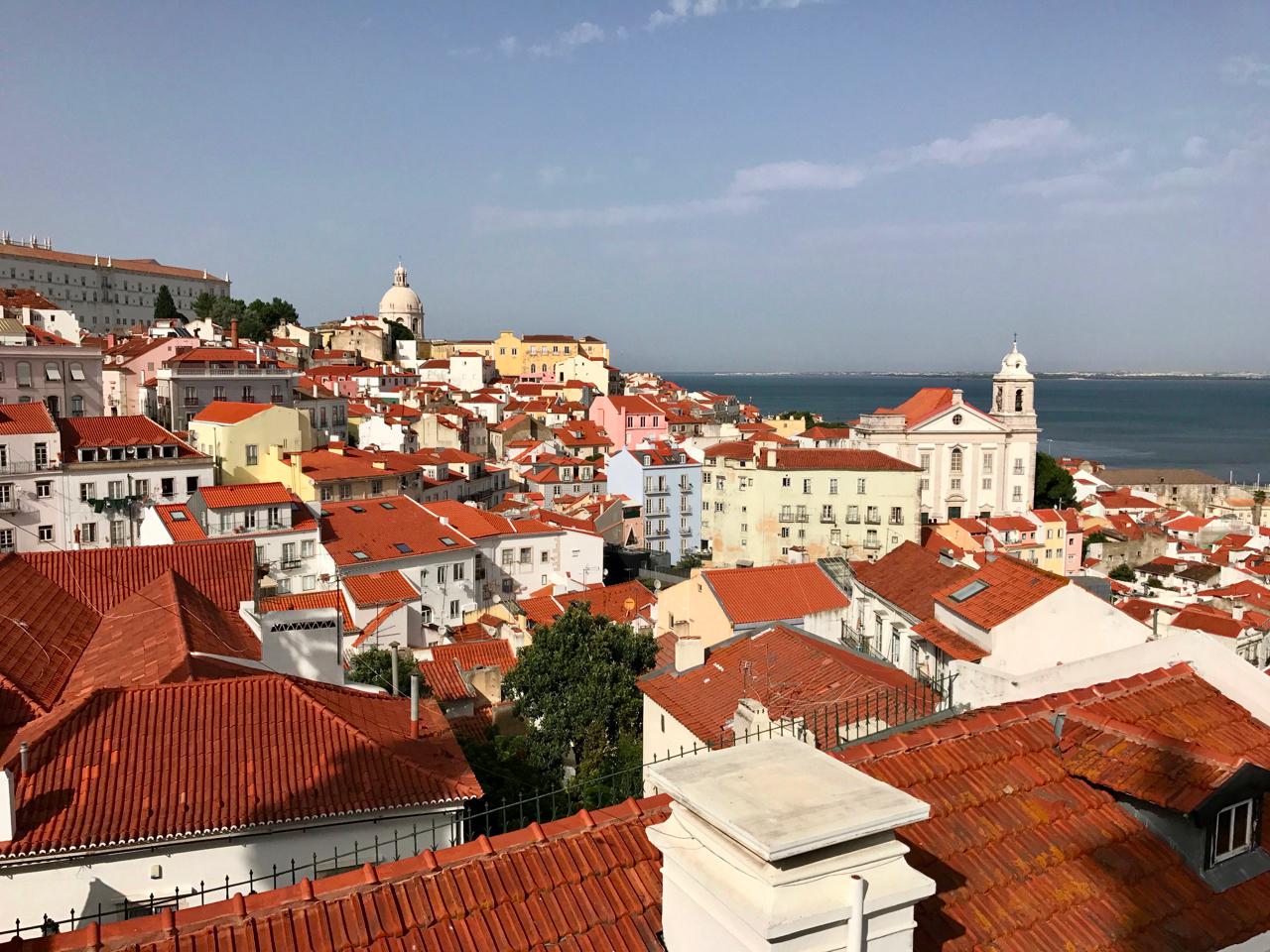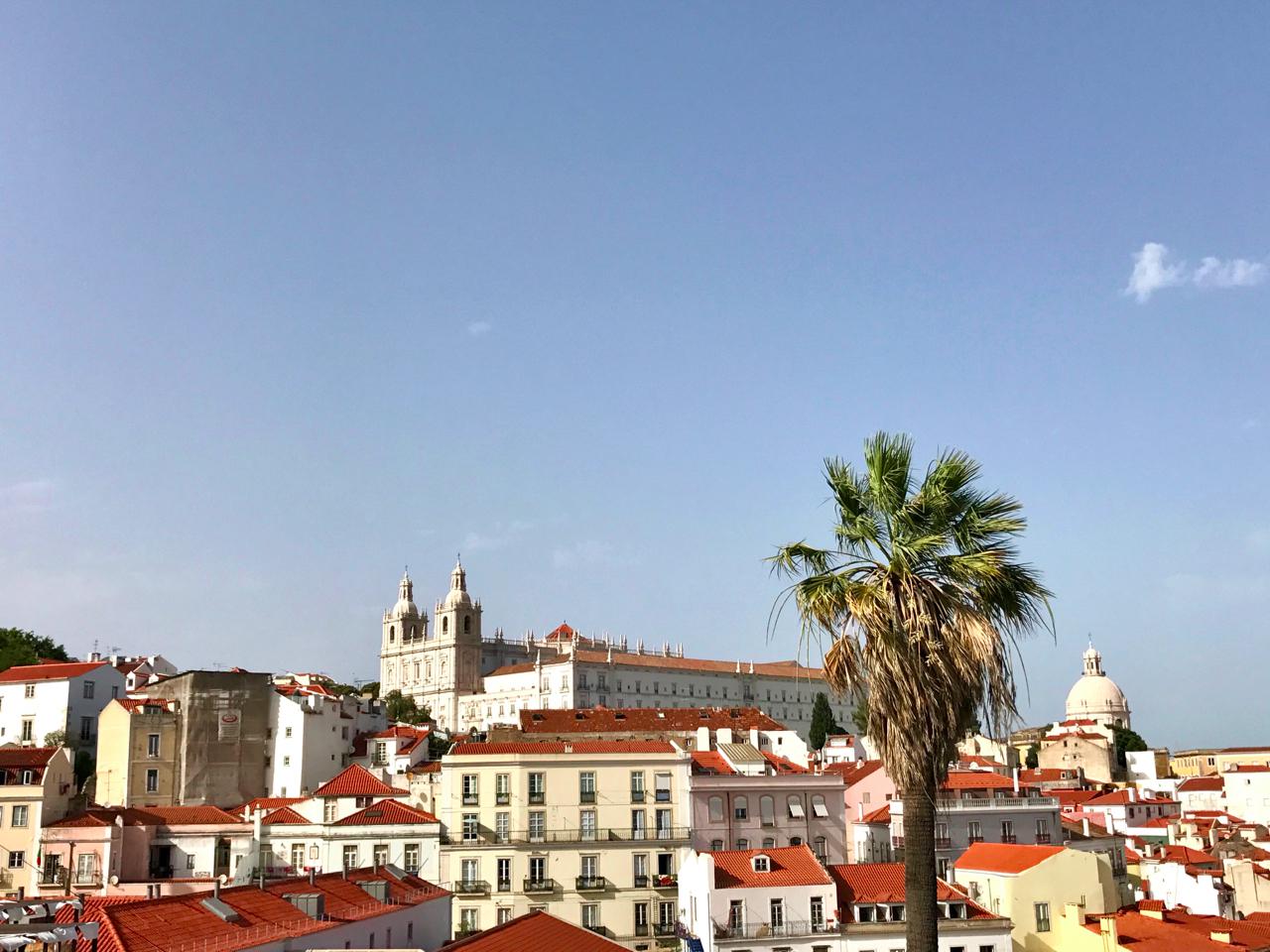Portugal Cities
From Alfama to Principe Real: Lisbon’s Best Neighbourhoods


One of the best ways to get to know Europe’s historic cities is on foot, and Lisbon is no exception
Lisbon is called ‘A Cidade das 7 Colinas’ or ‘City of 7 Hills’, so when uncovering all this city has to offer, it often pays to leave the bicycle on the footpath and head off on foot instead. It’s the kind of city you can amble aimlessly around for hours, finding yourself in various neighbourhoods and losing yourself (and track of time) in the multi-coloured buildings, pretty small squares and general upbeat bustle of the town.
But where to begin, and which neighbourhoods to explore? If you’re a fan of beautiful architecture, good shopping and historic, cobble-stoned European villages, there are a few you won’t want to miss. Want to know where the locals go for the best food and drink in Lisbon? Find out at our Local’s Guide to Lisbon.
Chiado
Chiado is one of the most cosmopolitan areas in Lisbon, known for its array of top restaurants, bars, cafes and shopping. It feels particularly upmarket compared to many of the other neighbourhoods of Lisbon, and it is the kind of place best explored at a leisurely pace, taking in the immaculate streets and beautiful, traditional buildings, before digging into an aperitif before a night out in Bairro Alto. In recent years, lots of new boutique homewares and designer fashion stores have opened up there as well as in Principe Real, so it’s definitely worth uncovering if you fancy some retail therapy.
Bairro Alto
Bairro Alto is an historic and slightly grungy part of Lisbon, and definitely the place to go if you’re looking to drink, dance or mingle ‘til the early hours. Just walking the uneven, hilly streets here in the evening is entertainment in itself, or settle into a casual alfresco restaurant and while away the hours with some serious people-watching.
Alfama
For a more relaxed and ambient feel, head to medieval Alfama – Lisbon’s oldest neighbourhood and often considered one of its most photogenic, thanks to the slew of run-down, colourful and Portuguese tile-clad buildings. With its hilly location and village-within-a-city feel, you’ll find photo opportunities at every corner. Expect winding alleys, tiny squares and courtyards, colourful walls and graffiti-art, traditional tile panels, old architecture and arches, gardens and fountains.
It’s a favourite among locals and tourists alike, who flock there for romantic, charming dinners by candlelight and to listen to the heart-wrenching, beautiful wailing that is fado – traditional Portuguese song. It won’t be for everyone, but it’s something we definitely don’t have in Australia and for that reason alone we recommend experiencing it at least once while in Lisbon.
Principe Real
Principe Real is an area that seems to become more gentrified and chic every time we visit – think of it like the Double Bay of Lisbon. Here you’ll find colourful mansions, a few of which were abandoned but have recently been snapped up by investors, quick to get into one of the most sought-after places to live in Lisbon. The suburb oozes upmarket luxury, with a growing retail market, immaculate gardens and pretty little squares. Its hill-top position also gives residents and visitors pretty special views over the suburbs below.
Avenida Da Liberdade
Even more affluent these days is the area around Avenida Da Liberdade, a tree-lined boulevard and one of the most expensive shopping streets in Euorpe. Cristiano Ronaldo recently bought a penthouse in a new development there for a record-breaking price.
Castelo
Another old town neighbourhood located near Sao Jorge Castle, where plenty of celebrities are purchasing property. Once a run-down part of Lisbon, it is now quickly gentrifying and is on its way to becoming another Principe Real.
If you have some time left over after wandering the streets of Lisbon, you may as well do as the tourists do (after all, you’re one them, whether you like it or not), and check out some of the city’s historic sights. The good news is, quite a few of them are within walking distance of each other.
Lisbon’s triumphal arch, the Arco da Rua Augusta on the Praça do Comércio has excellent views from the top, and at just 3€ to make the climb, why wouldn’t you? The monument was built to commemorate the city’s reconstruction after the earthquake of 1755.
Worthy of a gander is The Tower of Belém, the Gothic, 16th century monument on the water’s edge, designed to defend the entrance of the Tagus river. While you’re in Belém, you may as well walk a little further down the sun-drenched river boardwalk with its various river-front restaurants to the Monument to the Discoveries. From there, you can take in the magnificence of the 25 de Abril Bridge. Got déjà vu? No, it’s not just your imagination, this two-kilometre, red-steeled suspension bridge looks more than a little like San Francisco’s world-famous Golden Gate Bridge.
A ten minute walk from the river you’ll find Jeronimos Monastery. The 14th century Gothic and Manueline building is spectacular and well worth a visit. Nearby you’ll also find Praca do Comercio, Lisbon’s world-famous square with the city’s finest sculptural monument the equestrian statue of Dom José I. Fringing the square are beautiful, geometric buildings housing arcades, and to the north is Lisbon’s triumphal arch. Its meaning? To remind all who pass through it that Portugal once governed the world.
Castle of Sao Jorge is the cradle of the city, and hails from the 12th century. It is considered one of the finest fortresses in all of Portugal.
Then there’s the Aguas Livres Aqueduct, which took 100 years to build – not surprising given it can carry water over a distance of 58 kilometres! The aqueduct has been operational since 1570, and it features 35 arches that are 941 metres long. If you make the very worthwhile trip from Lisbon to the castle district of Sintra, you’ll pass right under it on the highway, Avenida Calouste Gulbenkian, and witness the largest stone arch in the world at 66 metres high and 40 metres wide. Nothing to sneeze at, we think!
For weekend trips from Lisbon there’s the beach holiday favourite, the Algarve and the rugged landscape of the Alentejo, and for day-trips there is the castle city of Sintra, which is pretty much the stuff of fairy tales with its multiple castles to explore.
Still not done exploring? Check out our Local’s Guide to Lisbon for the city’s best restaurants, bars and things to do.
Latest Articles
Don't miss the latest from Luxury Travel
